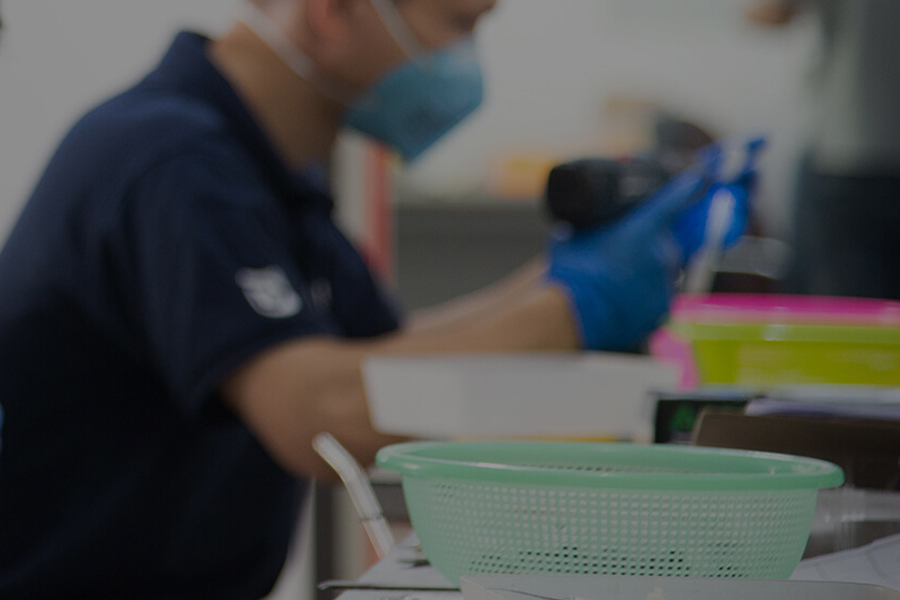Horizontal machining center refers to a machining center machine tool whose spindle axis is parallel to the worktable. It can process larger parts and can be indexed and rotated. It is most suitable for multi-process machining of parts such as milling, drilling, boring, reaming, tapping, two-dimensional and three-dimensional surfaces. The good performance of the body hole system and the plane processing is also particularly suitable for the boring processing of the box hole. It is widely used in automobiles, internal combustion engines, aerospace, home appliances, general machinery and other industries.
The horizontal machining center is divided into fixed column type and mobile column type according to whether the column moves.
1. Fixed column type
- 1. The cross movement of the spindle box, the spindle box moves in X and Z directions, and the work table moves in Y direction. It is suitable for multi-process processing such as boring and milling of small and medium parts.
- 2. The cross movement of the worktable, the worktable moves in the X and Z directions, and the spindle box moves in the Y direction. The spindle box has two forms of positive hanging and side hanging on the column. It is suitable for multi-process processing such as boring and milling of medium-sized complex parts.
- 3. The spindle box is hung on the side and the column. The spindle box moves in the Y and Z directions. This layout is similar to the planer type horizontal milling and boring machine, and the work table moves in the X direction. It is suitable for multi-process machining such as boring and milling of medium-sized parts.
2.mobile column type
- 1. The column cross movement type, the column moves in Z, U (parallel to X direction), the spindle box moves in Y direction on the column, and the workbench moves in X direction on the front bed. It is suitable for multi-process processing such as boring and milling of medium-sized complex parts.
- 2. Planer type, the bed is T-shaped, the table moves in the X direction on the front bed, and the column moves in the Z direction on the back bed. The main shaft box has two forms of positive hanging and side hanging on the upright column for Y-direction movement. It is suitable for multi-process processing such as boring and milling of medium and large parts, especially long-length parts.
- 3. The spindle ram feed type, the spindle box moves in the Y direction on the column, and the spindle ram moves in the Z direction. The column moves in X direction. The worktable is fixed or equipped with a rotary worktable. It can be equipped with multiple working tables, suitable for the processing of small and medium-sized multiple parts, and the time for workpiece loading and unloading and cutting can coincide.
Difference from vertical machining center
1. Workbench
The vertical machining center table is generally a T-slot table with a cross slide structure. There are two sets of motion mechanisms responsible for the movement of the table in the vertical direction. The table for X-feed is covered by the guide rail for Y-feed on.
The worktable of the horizontal machining center can only move in X or Y direction. The worktable is generally a rotary worktable with dot matrix screw hole table, and it is relatively easy to choose the exchangeable double worktable.
2. the main shaft
The vertical machining center refers to the machining center with the spindle in the vertical state, and the horizontal machining center refers to the machining center with the spindle in the horizontal state.
3. Processing objects
The vertical machining center is limited by the height of the column and the tool change device. It cannot process too high parts. It is suitable for processing discs, sleeves, and plate parts. The volume of the processed workpiece is relatively small. If you want to realize the side processing of the workpiece, you must add an angle. Head or CNC turntable. If a rotary table that rotates along the horizontal axis is installed on the work table, it can be used to process spiral parts.
The horizontal machining center can complete the processing of the other four surfaces except the installation surface and the top surface after one clamping, which is the most suitable for processing box parts. After the angle head is installed, pentahedron processing can be achieved.
4. Chip removal
When the vertical machining center is processing the cavity or the concave surface, the chips are not easy to be discharged. In severe cases, it will damage the tool, damage the processed surface, and affect the smooth processing of the processing.
The horizontal machining center can easily remove chips during processing, and the processing conditions are relatively ideal.
5. Column
The columns of vertical machining centers generally do not move, and are generally made as strong as possible in order to pursue rigidity. There is also a moving column vertical machining center. The table of the moving column vertical machining center only performs X or Y movement, and the column will perform Y or X movement accordingly. This design method has greater power requirements for the drive motor of the column. .
The column of the horizontal machining center must be a moving column. The vertical T-shaped horizontal machining center column moves in the X direction, and the inverted T-shaped horizontal machining center column moves in the Z direction. The structure of the mobile column requires that the column must be as lightweight as possible on the premise of satisfying rigidity. Foreign machine tools often use steel plate welding structures to solve this problem.
6 control
The vertical machining center is easy to clamp, easy to operate, easy to observe the processing situation, and easy to debug the program.
The workpieces processed by horizontal machining centers are generally very large, and it is difficult to set up, it is not easy to monitor the processing process, and the operation and debugging are relatively difficult.
